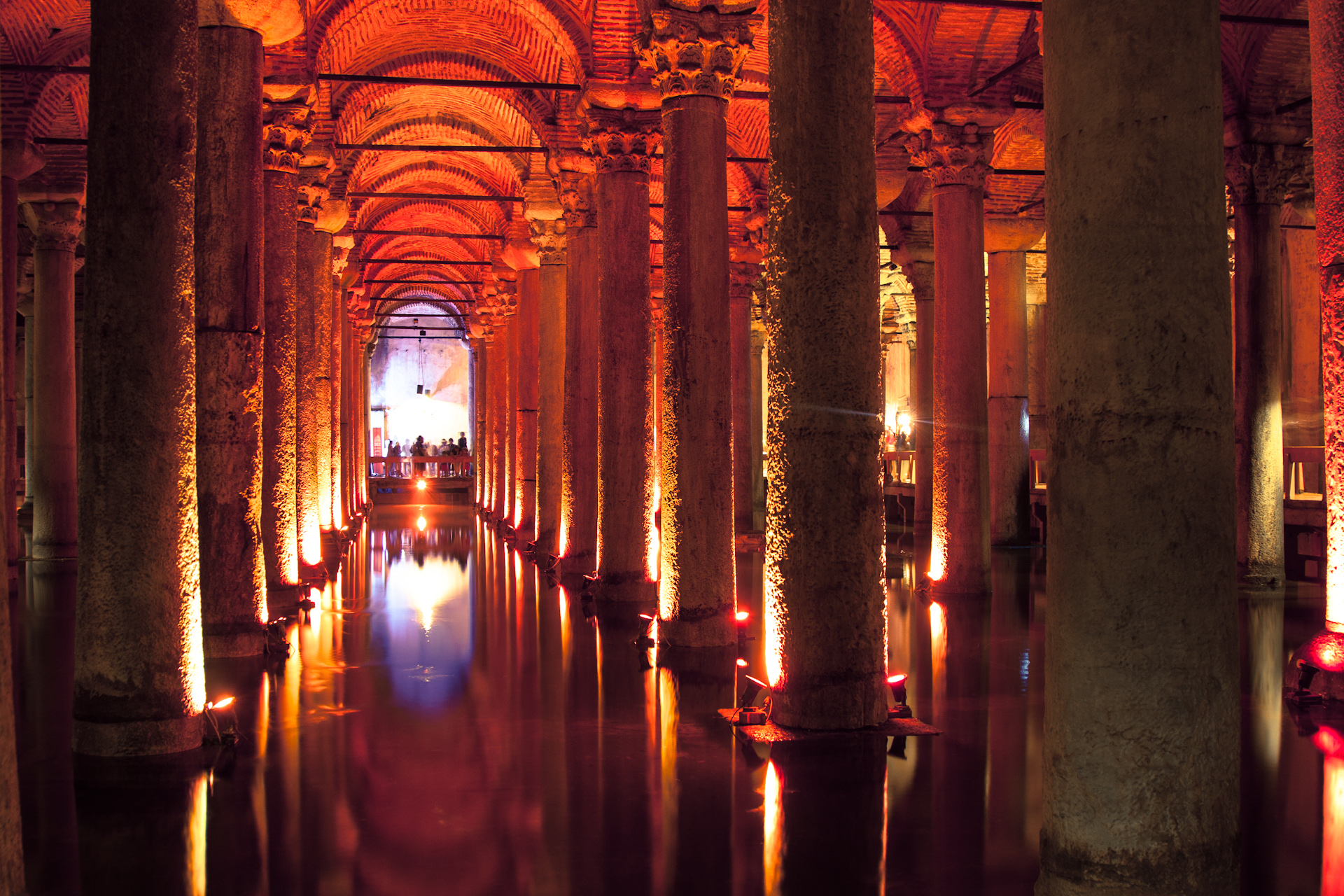Beneath the bustling streets of Istanbul lies a hidden marvel that has captivated visitors for centuries. The Basilica Cistern, also known as the “Sunken Palace” or “Yerebatan Sarnıcı” in Turkish, is a subterranean wonder that transports you back in time to the Byzantine era. This vast underground chamber, with its forest of columns and eerie atmosphere, holds secrets that continue to intrigue historians and tourists alike.
As you descend the stone steps into the dimly lit cavern, the first thing that strikes you is the sheer scale of the place. Covering an area of 9,800 square meters, the cistern is capable of holding up to 100,000 tons of water. The space is supported by an impressive array of 336 marble columns, each standing 9 meters tall, creating a mesmerizing sight that seems to stretch endlessly into the darkness.
The Basilica Cistern was built in the 6th century during the reign of Byzantine Emperor Justinian I. Its primary purpose was to store and supply water to the Great Palace of Constantinople and other buildings in the vicinity. However, its grandeur suggests that it was more than just a functional structure – it was a testament to the engineering prowess and artistic vision of the Byzantine Empire.
One of the most intriguing features of the cistern is the pair of Medusa heads that serve as column bases in the northwest corner. These ancient stone carvings depict the mythological Gorgon, known for her ability to turn onlookers to stone with her gaze. Curiously, one head is positioned upside down, while the other is tilted sideways. The reason for this unusual placement remains a mystery, sparking countless theories and legends over the years.
As you wander along the raised walkways, the gentle sound of water dripping echoes through the chamber, creating an almost mystical ambiance. Soft lighting illuminates the columns and reflects off the water below, casting dancing shadows on the vaulted ceiling. It’s easy to see why this atmospheric location has been featured in numerous films and novels, including Dan Brown’s “Inferno” and the James Bond movie “From Russia with Love.”
The cistern’s history is not without its share of drama and intrigue. After the Ottoman conquest of Constantinople in 1453, the new rulers were unaware of the cistern’s existence for nearly a century. It was rediscovered when locals were found to be catching fish through holes in their basement floors. This led to a thorough exploration of the underground chamber and its eventual restoration.
Today, the Basilica Cistern stands as one of Istanbul’s most popular tourist attractions, offering visitors a unique glimpse into the city’s rich past. Conservation efforts have been ongoing to preserve this architectural gem, with recent renovations ensuring that future generations can continue to marvel at its beauty.
As you emerge from the cool, damp air of the cistern back into the bustling streets of modern Istanbul, you can’t help but feel a sense of awe at the ingenuity and artistry of those who came before us. The Basilica Cistern serves as a powerful reminder of the layers of history that lie beneath our feet, waiting to be discovered and appreciated.
In a city known for its iconic landmarks like the Hagia Sophia and the Blue Mosque, the Basilica Cistern offers a different kind of wonder – one that invites you to look beneath the surface and explore the hidden treasures that time has almost forgotten. It’s a testament to Istanbul’s enduring ability to surprise and enchant, even after centuries of civilization have come and gone.
The Basilica Cistern stands as a remarkable testament to Byzantine engineering and architectural prowess. This underground marvel, with its forest of columns and haunting atmosphere, continues to captivate visitors and scholars alike. Its historical significance as a vital water source for Constantinople, coupled with its later abandonment and rediscovery, underscores the enduring legacy of ancient infrastructure. Today, the Basilica Cistern serves not only as a popular tourist attraction but also as a powerful reminder of the ingenuity and foresight of past civilizations in addressing urban challenges. Its preservation and ongoing restoration efforts ensure that future generations can continue to appreciate this unique subterranean wonder, bridging the gap between Istanbul’s past and present.

